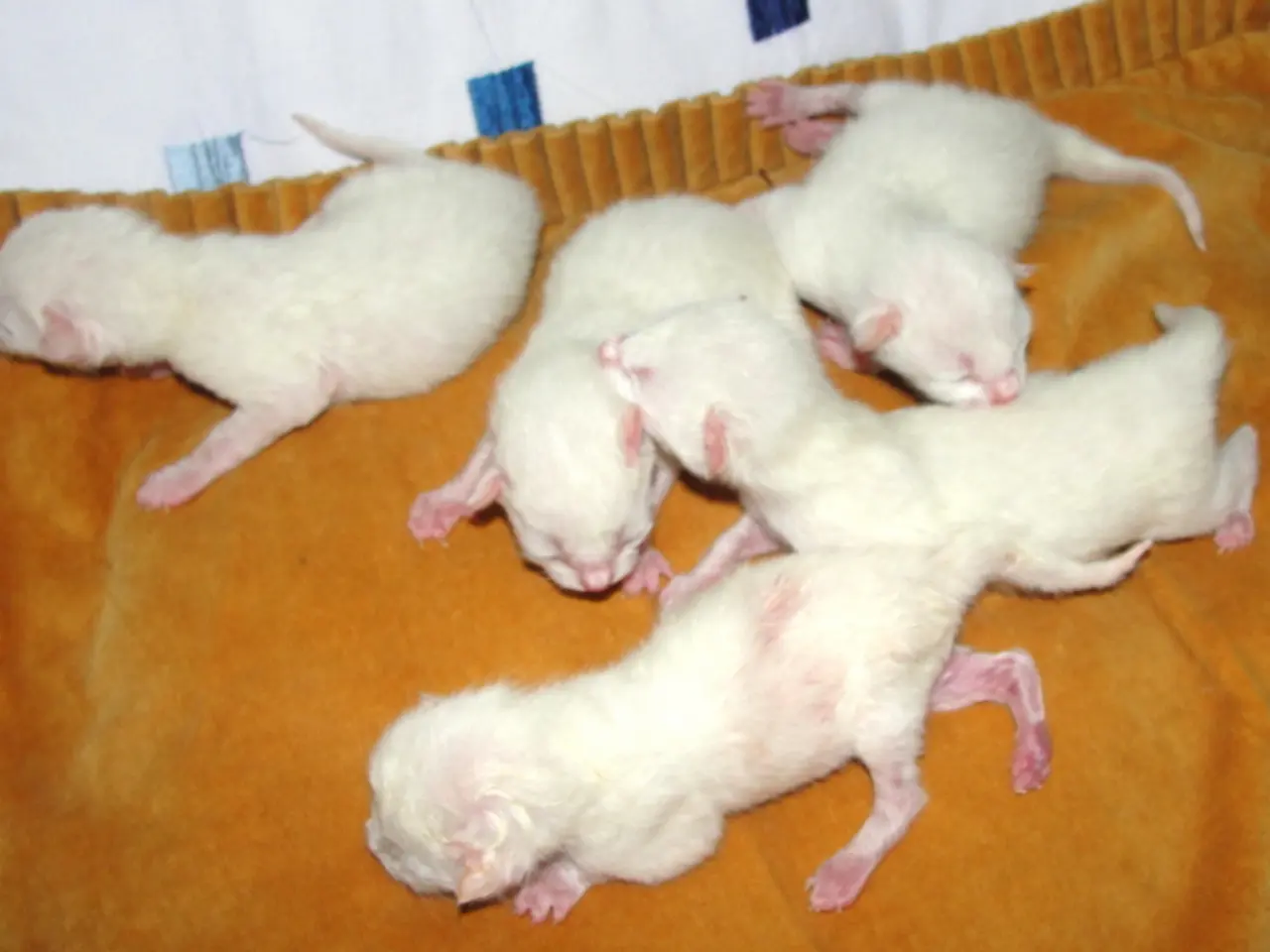Rats Exhibiting Laughter Behavior When Stimulated and Demonstrating a Preference for Such Experiences
In a groundbreaking discovery, scientists have uncovered a hidden dimension of rat behavior - ultrasonic "giggles" or chirps - that occur during playful interactions. This revelation not only sheds light on the emotional lives of these often-maligned creatures but also opens up a new avenue for understanding animal intelligence and emotional expression.
Using specialized recording equipment such as ultrasonic microphones, researchers have been able to capture high-frequency sounds inaudible to humans. Early research in the mid-20th century hinted at the existence of ultrasonic vocalizations in rats, but it was not until the early 2000s that these vocalizations were specifically linked to playful activities like tickling, wrestling, and chasing.
To confirm this association, scientists like Markus Wöhr and his team observed rats in controlled environments equipped with ultrasonic microphones and video cameras. Their findings revealed that juvenile rats emit high-pitched squeaks, around 50 kHz, just before and during playful behaviors. These sounds, interpreted as a rat form of laughter or "giggles," are now seen as clear indicators of positive, playful states in rats.
The study of rat laughter promises to be as surprising and delightful as the first time a scientist heard a rat giggle. By understanding the connection between these ultrasonic chirps and social interaction, researchers hope to uncover new dimensions of animal intelligence and emotion. Moreover, these findings have opened up research paths linking ultrasonic chirps to social communication and emotional expression in rats, and they are also used to study autism-related social communication deficits.
This new understanding of rat behavior has the power to transform our relationship with these creatures, encouraging empathy and respect. It also underscores the importance of compassionate handling and treatment of all creatures, great and small. The insights from rat laughter urge us to consider the emotional needs of animals in our care, recognizing that joy and play matter just as much as food and shelter.
Furthermore, scientists are now exploring how the findings about rat laughter can help understand mental health, social behavior, and the treatment of stress and anxiety in both animals and humans. As we delve deeper into the hidden world of animal communication, we may find that many species communicate beyond human perception, using sounds, scents, or signals that are crucial for their survival and well-being.
In conclusion, the discovery of rat laughter is a call to action for a more empathetic approach to animal care and research. It invites us to look closer, listen harder, and question what else we might be missing in the animal world. As we continue to unravel the mysteries of these ultrasonic chirps, we may find ourselves not only understanding rats better but also gaining a deeper appreciation for the complex emotional lives of all creatures.
The evolution of our understanding about animal intelligence and emotional expression has been significantly advanced through the discovery of rat laughter, opening up new avenues for research in health-and-wellness, particularly mental health. This newfound insight into the ultrasonic chirps emitted by rats during playful activities could potentially aid in understanding social behavior, treatment of stress and anxiety in both animals and humans, thereby aligning with the broader scope of science and wellness.




